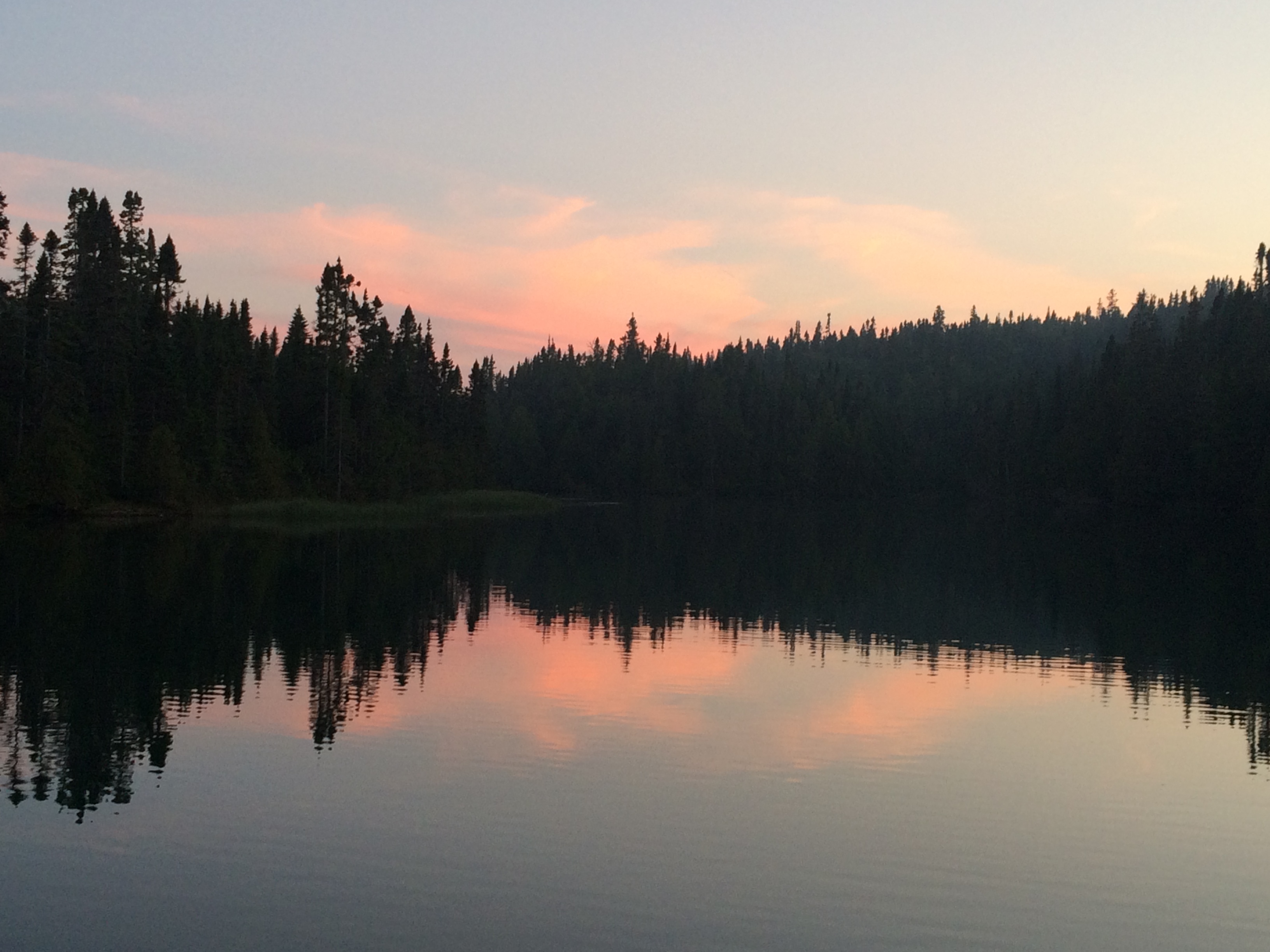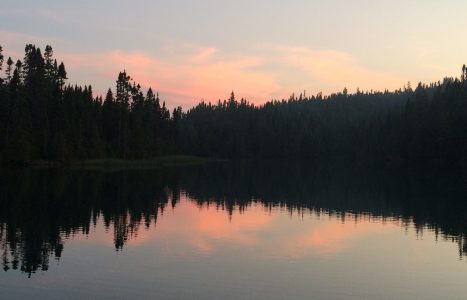Loon Harbour is not a harbor in the conventional sense. Rather than being an anchorage enclosed by the shore of an island or coastline, Loon Harbour is nestled among several islands at the west end of the Nipigon archipelago: Lasher, Spain and Borden. Well protected on all sides, Loon Harbour is spacious enough to accommodate an armada and is as pretty an anchorage as you’ll find on Lake Superior.
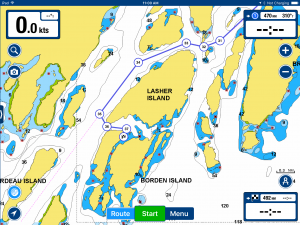
Loon was on our bucket list of anchorages to visit this summer. We bypassed other places on the list to spend our last night on the Canadian side of Lake Superior because, well, with a boat named after the loon family, how could we not stop there. We were not disappointed.
Anchored in 15 feet with a sandy bottom, we were a mere 30 yards from reedy shallows that looked like prime moose habitat. Julie, desperate to see a moose this trip, was encouraged by the moose friendly habitat. We dropped the dinghy into the water and motored to the gradual, open slope on Spain Island to the west.
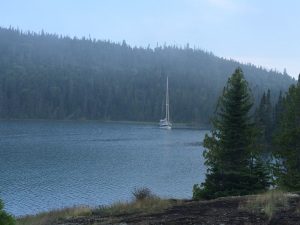
When we entered the sweet little pocket at the south end of the harbor, we spotted a rock-edged fire pit appointed with logs for sitting midway up Spain’s slope. All stone, it is a massive slab one hundred feet or more wide and nearly as deep to the edge of the tree line. Clumps of grass and bonsai-sized trees sprout from fissures in the otherwise seamless granite shelf; mossy mats cover shallow depressions where soil has collected and encouraged plants to take root.
On the way back to the boat we detoured into a small shallow cove to inspect the remnants of the portable sawmill abandoned a century ago. Chunks of rusted equipment and massive wood beams lie submerged in the cold, clear water. Then the dinghy motor started missing, then died. I got it to cough back into life briefly before it died again, so I rowed us back to Gaviidae.
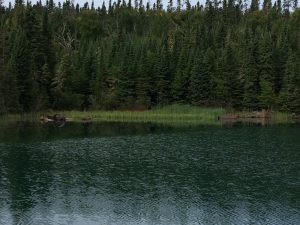
After fruitlessly pulling on the starting cord several more times, I pulled out the outboard’s manual. I scanned it briefly before adjusting the carburetor—drawing on memories of nurturing two-stroke gas engines in West Africa and Saudi Arabia and on more recent tinkering on the Blue Loon’s four-stroke Yamaha.
An hour’s worth of effort produced only coughing and sputtering from the engine. Julie was growing impatient to go exploring. She wanted to locate a hidden sauna she had learned about from one of the kayak expedition instructors back at CPR Slip. I reset the carburetor to original settings and we began rowing up a narrow channel in the direction of the presumed sauna. Clarification: I began rowing us up the channel.
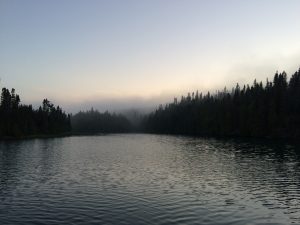
About an hour’s worth of rowing and exploring, we spotted what looked like an access point on a tiny island. Swinging around to the other side of the island, we saw another access and a small shack covered with netting and camouflage cloth; even the roof was painted in camouflage. 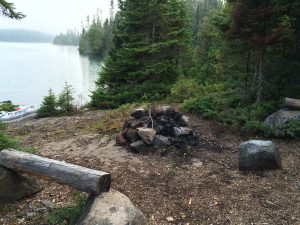
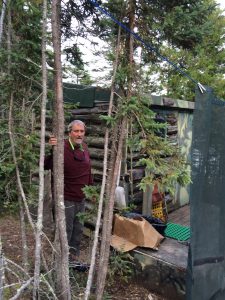
We found the hidden sauna! It was completely set up for use, including wood ready to burn, saw and axe to replenish the supply, and a small rock fire pit.
In consideration of the Canadians who built this little sauna and have tried so hard to keep it concealed, we are not going to disclose the exact location other than to say it’s up the channel.
As the sun was setting lower in the sky,
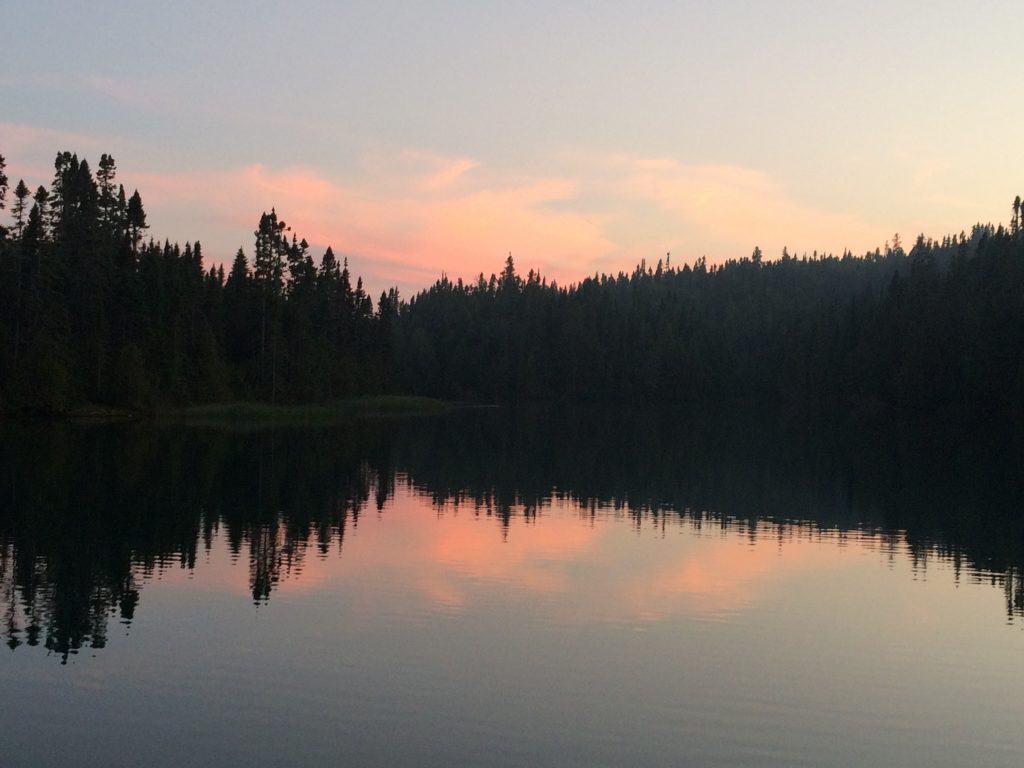
we skipped using the sauna and returned to the boat thinking we would either return later or the next day. Never happened. We awoke to a bright morning with foggy mists hanging over the reeds. Weather reports sounded like a perfect time to head for Isle Royale, so we pulled anchor. We saw beaver and, of course, loons, but motored out of Loon Harbour mooseless and unsauna’d.

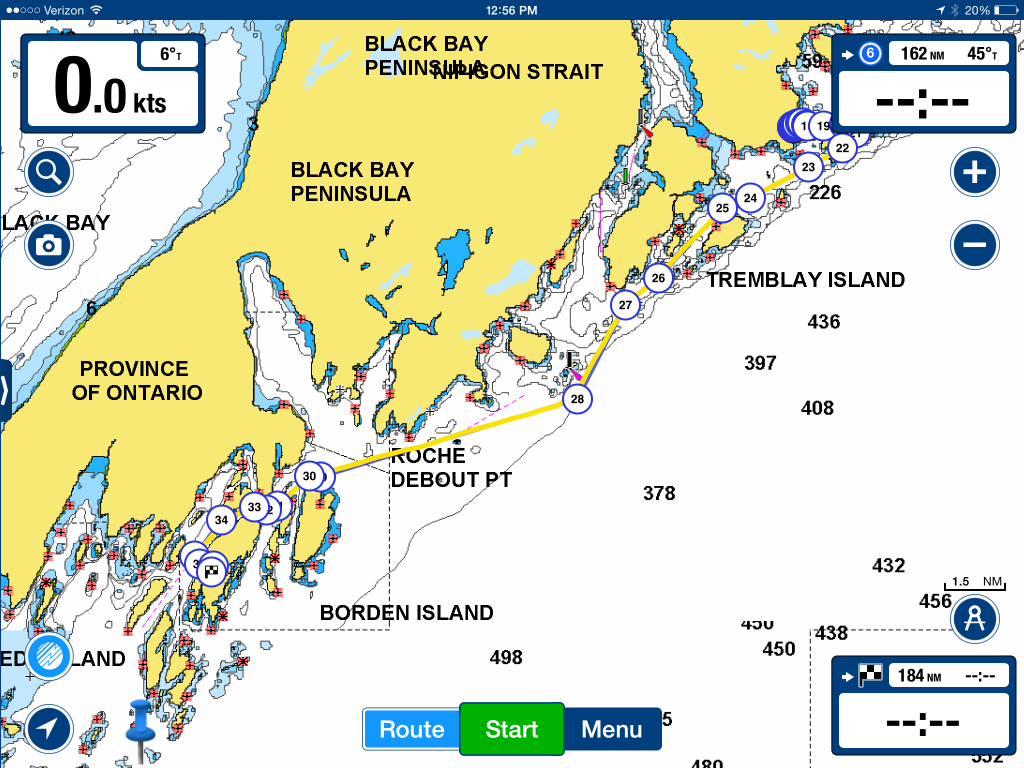
September 1 48°31.311’N 88°21.423’W 994.6 Nautical Miles
